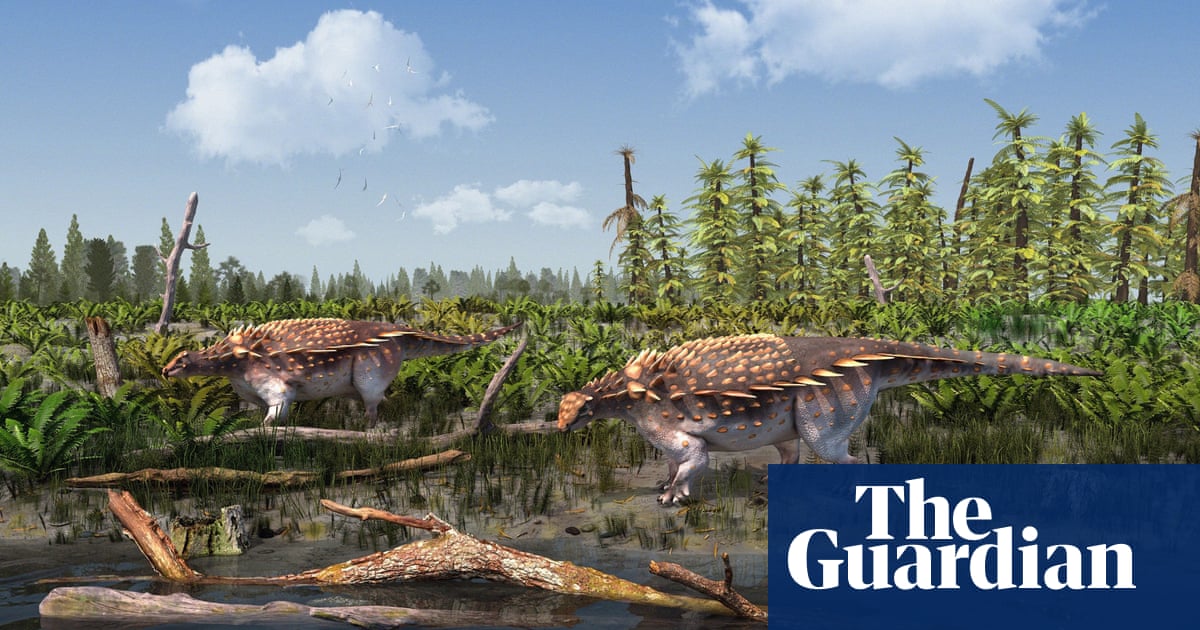
A fossil that been had languishing in a museum drawer in Brighton, wrongly labelled as a shark fin skeleton, has now been identified as a completely new species of prehistoric flying reptile that soared majestically over what are now the Cambridgeshire fens.
Roy Smith, a University of Portsmouth PhD student, identified the creature after realising it was much more unusual and interesting than its label suggested. He identified the fossil as the tip of the beak of a new species of pterosaur (from the Greek for “winged lizard”), a creature that existed 228m-66m years ago and the earliest vertebrate known to have evolved powered flight.
Pterosaurs with this type of beak have been found in north Africa, so Smith and others who have studied the find say it is reasonable to assume a likeness to the alanqa, a frightening-looking creature thought to have a wingspan of 4 metres or more.
Smith discovered the creature during a trawl of fossil collections housed in the Booth Museum in Brighton. The fossils were originally unearthed by workmen digging for phosphates in the Fens in the 19th century, who sold them on for a little extra cash.
It was while Smith was examining the fossils of what were labelled as shark fin spines that he realised some of them were actually fragments of the jaws or beaks of pterosaurs. The do resemble shark fin spines but with crucial differences.
Smith said: “One such feature are tiny little holes where nerves come to the surface and are used for sensitive feeding by the pterosaurs. Shark fin spines do not have these but the early palaeontologists clearly missed these features.
“Two of the specimens discovered can be identified as a pterosaur called ornithostoma, but one additional specimen is clearly distinct and represents a new species. It is a palaeontological mystery.”
Smith, 26, from Derbyshire, has been fossil hunting since he was a boy but this is by far his most exciting find. He grew up scouring coal mine spoils for fossils and on Tuesday was to be found hunting for new finds on the seafront in Portsmouth where work is taking place on old city walls. “I didn’t find anything,” he said.
He said he had been on the point of halting work on the day he made his discovery. “I had a bit of time to kill so I started going through some other drawers. I was extremely excited when I came across this specimen, which was stuck on to a board.”
The Victorians who had been interested in the fossils found in the Fens included the naturalist Sir Richard Owen, who campaigned for the establishment of the Natural History Museum in London.
“Unfortunately, this specimen is too fragmentary to be the basis for naming the new species. Sadly, it is doubtful if any more remains of this pterosaur will be discovered, as there are no longer any exposures of the rock from which the fossils came. But I’m hopeful that other museum collections may contain more examples.” As soon as Covid restrictions lift, he plans to continue his search for others.
Smith’s supervisor, Prof Dave Martill, said: “The little bit of beak is tantalising in that it is small, and simply differs from ornithostoma in subtle ways, perhaps in the way that a great white egret might differ from a heron. The differences in life would have been more to do with colour, call and behaviour than in the skeleton.
“This is extremely exciting – to have discovered this mystery pterosaur right here in the UK. This find is significant because it adds to our knowledge of these ancient and fascinating flying prehistoric reptiles, but also demonstrates that such discoveries can be made, simply by re-examining material in old collections.”
The results of Smith’s discovery have been published in the Proceedings of the Geologists’ Association journal.












